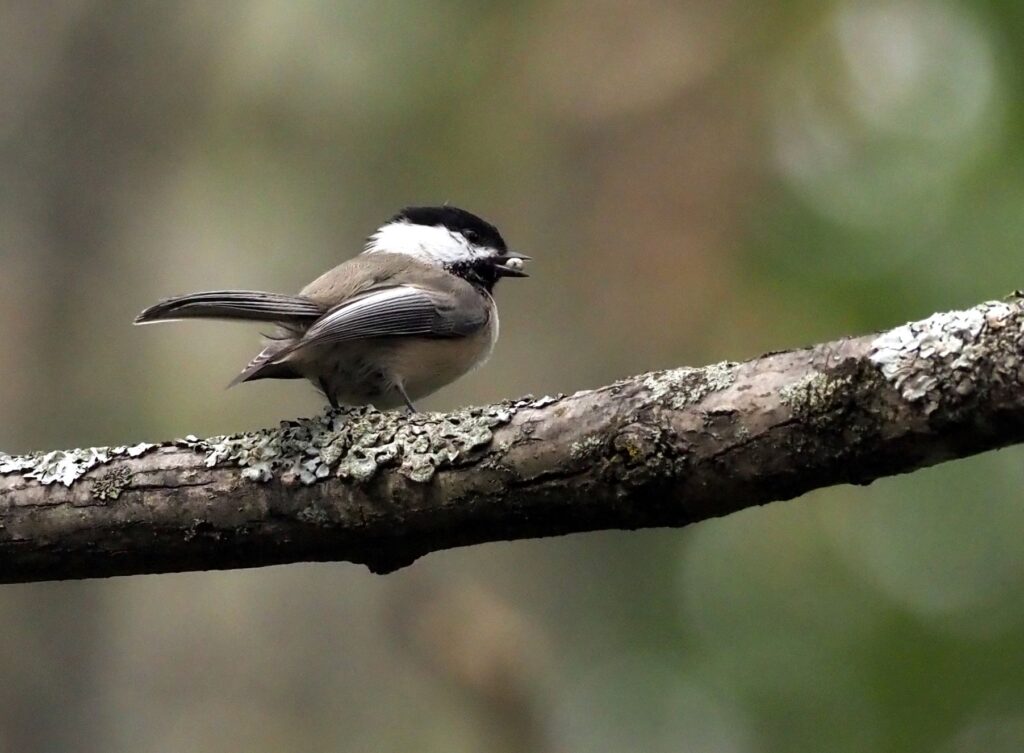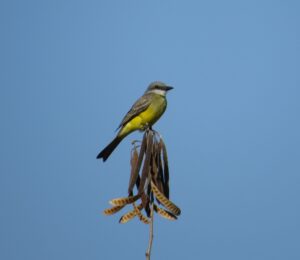
September 21-29, 2022
With Simon Thompson
Narrative and Photos by Simon Thompson
Despite some of the mileage, this is one of my favorite trips which visits three great birding destinations in the Mid-Atlantic states. We always start the tour in Philadelphia which has good connections to both domestic and international destinations; the latter important on this trip with our first guest from Spain.

After seeing our first Bald Eagles and Forster’s Terns right outside the hotel, we started our tour at the wonderful John Heinz NWR at Tinicum. This urban sanctuary is a must-see for visiting birders in the Philadelphia area and our visit on this trip was no exception. Despite being September, we had a pretty good selection of waterfowl, including Blue and Green-winged Teal, Wood Duck and an early female Northern Pintail. A late afternoon gathering of Lesser Black-backed Gulls at Peace Valley Park was quite the surprise, considering we were well inland and on our way to Allentown. While staying in cities is not something we prefer to do, the restaurants in the center of Allentown are very good and the three nights spent nearby enabled us to enjoy several very good evening meals.
Our first of the three birding destinations on this trip was Hawk Mountain, the famous mountain-top hawk-watching destination that can sometimes produce huge flights of raptors as they migrate south.
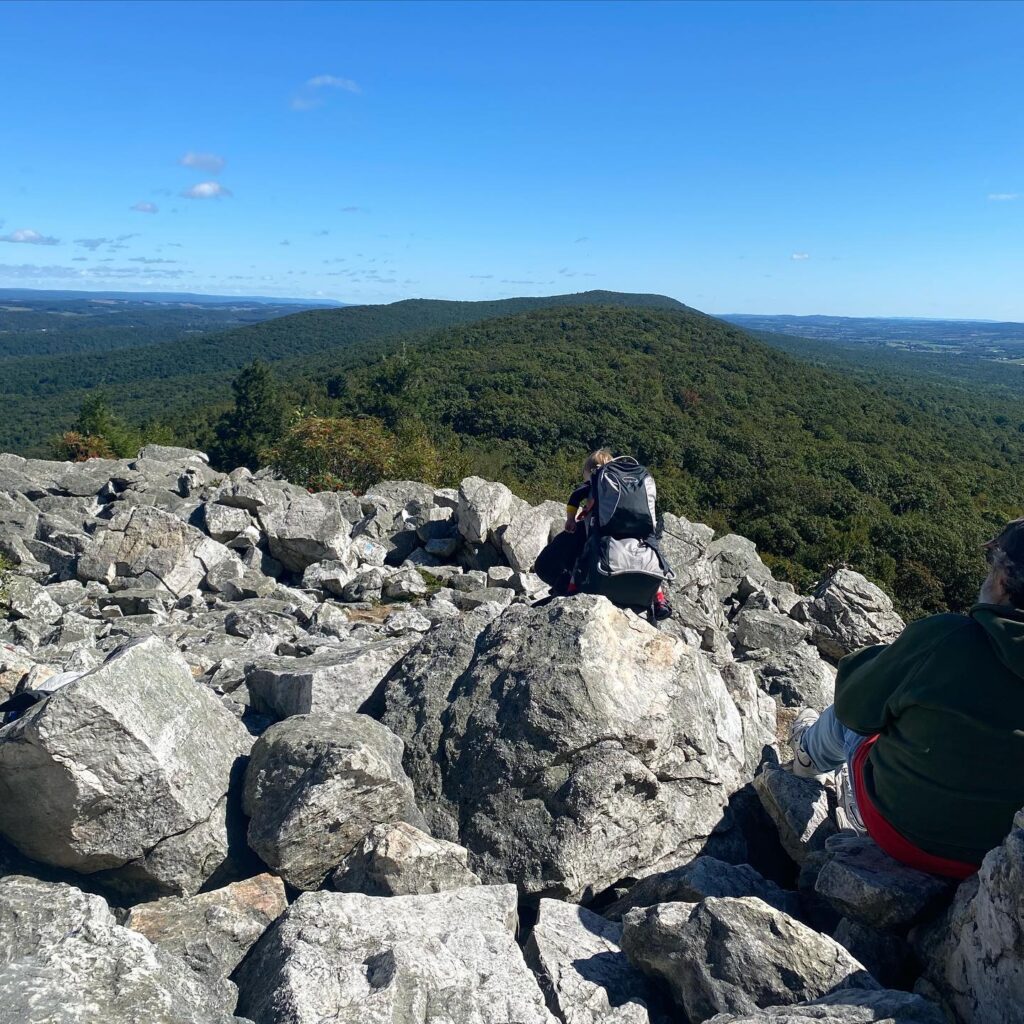

After a couple of shorebird stops along the way at a couple of retention ponds, we spent time at the North Lookout atop Hawk Mountain. It’s a rocky walk up to the overlooks, but we took our time and joined the other hawkwatchers atop the rocky pinnacle. It wasn’t a top-class hawk migration day, but we still had a steady stream of Sharp-shinned, Cooper’s and Broad–winged Hawks, plus a few Bald Eagles drifting south. After a few hours we again stopped by a few retention ponds and lakes on our way back to Allentown, picking up American Black Duck and Bufflehead along the way.
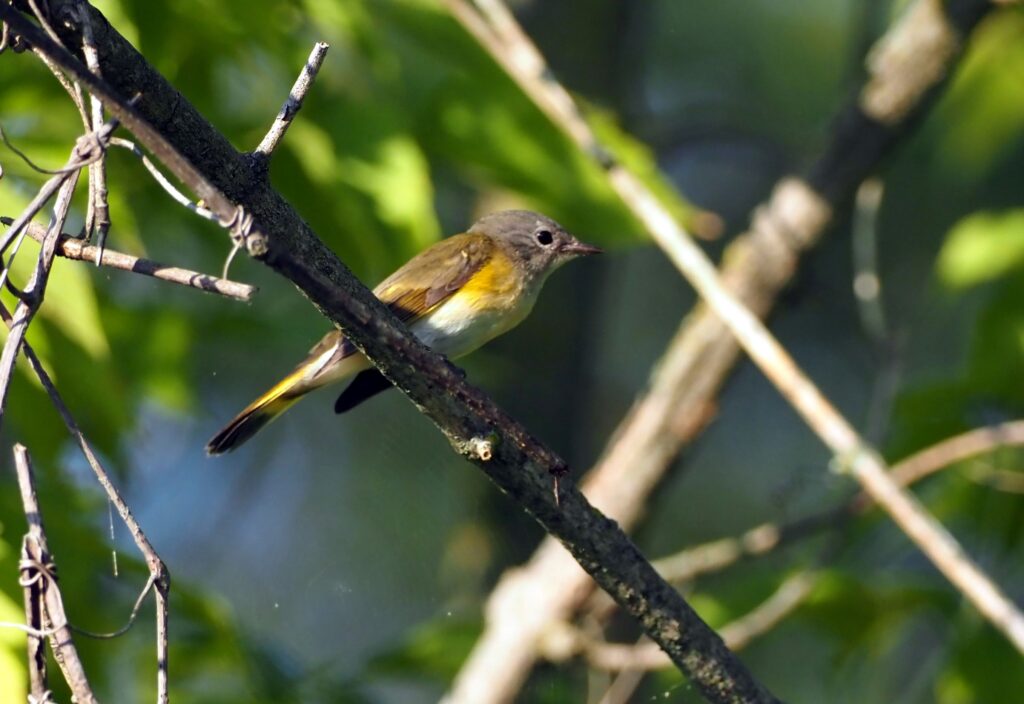
After some discussion we concluded that no-one wanted to deal with the rocky climb back up to North Lookout, so we headed inland to Beltzville State Park, a very attractive park that last year was full of migrant sparrows. Being slightly earlier this year, the sparrows had not arrived, but we had a flurry of late warblers, including Nashville, Redstart, Cape May, Yellow and Wilson’s. A few more stops at retention ponds on the way back to Allentown produced a few shorebirds – Lesser and Greater Yellowlegs, Pectoral and Least Sandpiper.
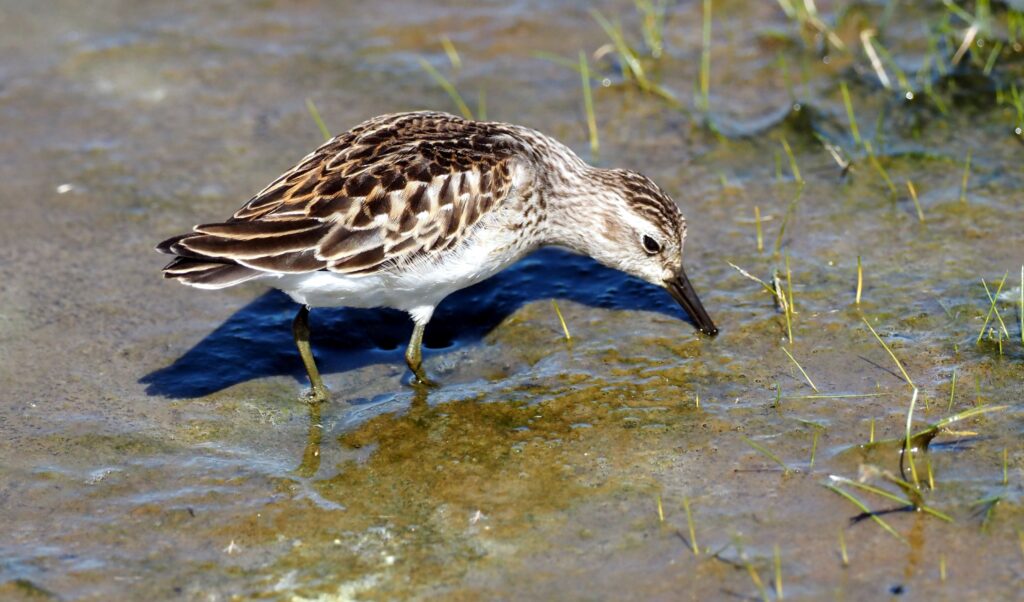
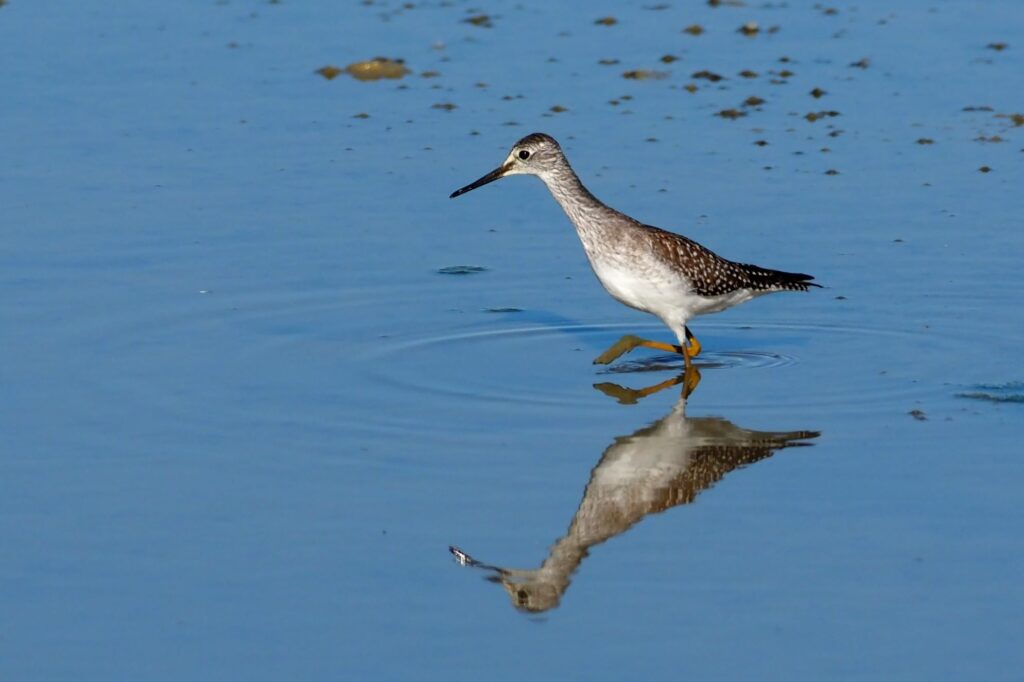
We started the next morning at Pool Wildlife Sanctuary, where a Connecticut Warbler had been reported.

Unfortunately we didn’t re-locate it, but a large mixed flock containing Bay-breasted, Magnolia and Blackburnian Warblers made for a nice visit.
Another good stop was a new wetland in Montgomery County – Dixon Meadow Preserve. This patch of reeds and marsh grass had a very nice boardwalk running through it, where we found Sora, Marsh Wren and Lincoln’s Sparrow. We had a nice picnic lunch at Wissahickon Environmental Center before continuing onto Bombay Hook NWR in Delaware.

We finished the day here, walking along the roads and enjoying the shorebirds. Black-bellied and American Golden-Plover, American Avocet and Semipalmated Sandpiper were new for the trip and a Clapper Rail walked around in the open posing for photographs.

We had a date with Saltmarsh Sparrows the following morning and they didn’t disappoint with great views from the boardwalk at Slaughter Beach. A couple of Wild Turkeys were a nice surprise at Cape Henlopen State Park, along with Black-and-white and Blackpoll Warblers and Brown-headed Nuthatch in the woods. This spot is almost guaranteed for the latter as the best spot in Delaware for them.
We followed lunch with a fairly long walk down to Gordon’s Pond. It was quite busy in the parking lot as a film crew was there filming a mini-series as well as many visitors cycling down the extensive boardwalk system. There were not a lot of shorebirds on the pools, but we did get good views of Osprey, Bald Eagle and Cooper’s Hawk. It was then off to Cape May via the ferry from Lewes. The weather was beautiful and we had an early Surf Scoter in the harbor, as well as good numbers of Brown Pelicans both in Delaware and New Jersey waters.

Cape May is always a wonderful place to bird and as always, we started on the Hawkwatch platform overlooking the lake with the Mute Swans. An immature Northern Harrier gave us excellent views as it quartered the marsh and even settled on the edge of the lake to drink.
We usually stay over in the Wildwood area which gives us chances to explore some of the salt marshes and coastal areas and the following morning found us at Nummy Island. The traffic is usually fairly quiet here so we could hear both Saltmarsh and Seaside Sparrows in the marsh grass, as well as enjoy large numbers of American Oystercatcher, a single Black Skimmer and a couple of latish Bobolinks that were flying over. Hummingbirds are often quite difficult to find late in the fall, so a visit to a private residence in Cape May was a success as several Ruby-throats were buzzing around the garden feeding on the fall-blooming flowers. There was also some hawk migration going on and we could look up to see Osprey, Broad–winged and both Sharp-shinned and Cooper’s Hawks moving through.

We spent the rest of the day hitting some of Cape May’s great birding spots. It’s hit or miss during migration as to whether the birds are there or not and our first stop at the Beanery was very quiet with only a couple of warblers to show for our effort. Cape May Meadows was better with some good shorebirds, such as Stilt Sandpiper, American Golden-Plover and our first Wilson’s Snipe of the tour. Lunch was back at the picnic shelter at the Hawk Platform where a molting drake Eurasian Wigeon was loafing in the water. An Osprey also gave us great photo opportunities as it fished (usually unsuccessful) in the lake.

Boat-tailed Grackle was also on our target list and our first stop near one of our seafood restaurant dinner spots produced several very noisy individuals, as well as more Seaside Sparrows and Semipalmated Plover. A pair of Common Ravens was a surprise when they flew over and perched atop a radio tower- apparently quite a rare bird in coastal NJ, but this pair was well-known at this location. As the winds were in the right direction, we then went to Higbee Beach, a well known migration spot, for a couple of hours this morning. A big push of Northern Flickers was moving through, as well as plenty of Red-eyed Vireos, Gray Catbirds, and Common Yellowthroats. A few other highlights included a very brief Connecticut Warbler, and Bay-breasted, Blackpoll and Chestnut-sided Warblers.

We then decided to head north towards Edwin Forsyth NWR aka Brigantine. A stop at the very interesting Wetland Institute produced a good number of roosting Willet, a few Tricolored and Little Blue Heron and a handful of migrants in the garden. The 8-mile loop at Brig was very birdy and we managed to catch up with a lot of waterbirds, including American Bittern, White Ibis, and Yellow-crowned Night-Heron. Huge numbers of Tree Swallows were swirling over the marshes as they amassed prior to their fall migration.


We walked down to the beach our last morning in Wildwood where large numbers of Sanderling were busy feeding along the shoreline. Unfortunately a nearby dog-owner didn’t keep his dog under control and let it chase the shorebirds- despite being asked not to. It was then another quick stop at Cape May NWR, where it was quite windy. We found another Cape May Warbler feeding in the goldenrods, as well as a Red-breasted Nuthatch and another Blackpoll Warbler. Unfortunately it was the last day of the tour so It was off to the airport in Philadelphia.
We finished the tour with around 165 species and a great selection of warblers, sparrows, shorebirds and birds of prey. The combination of habitats makes for a great tour and I hope everyone enjoyed the selection of birding sites.
A few more birds…



